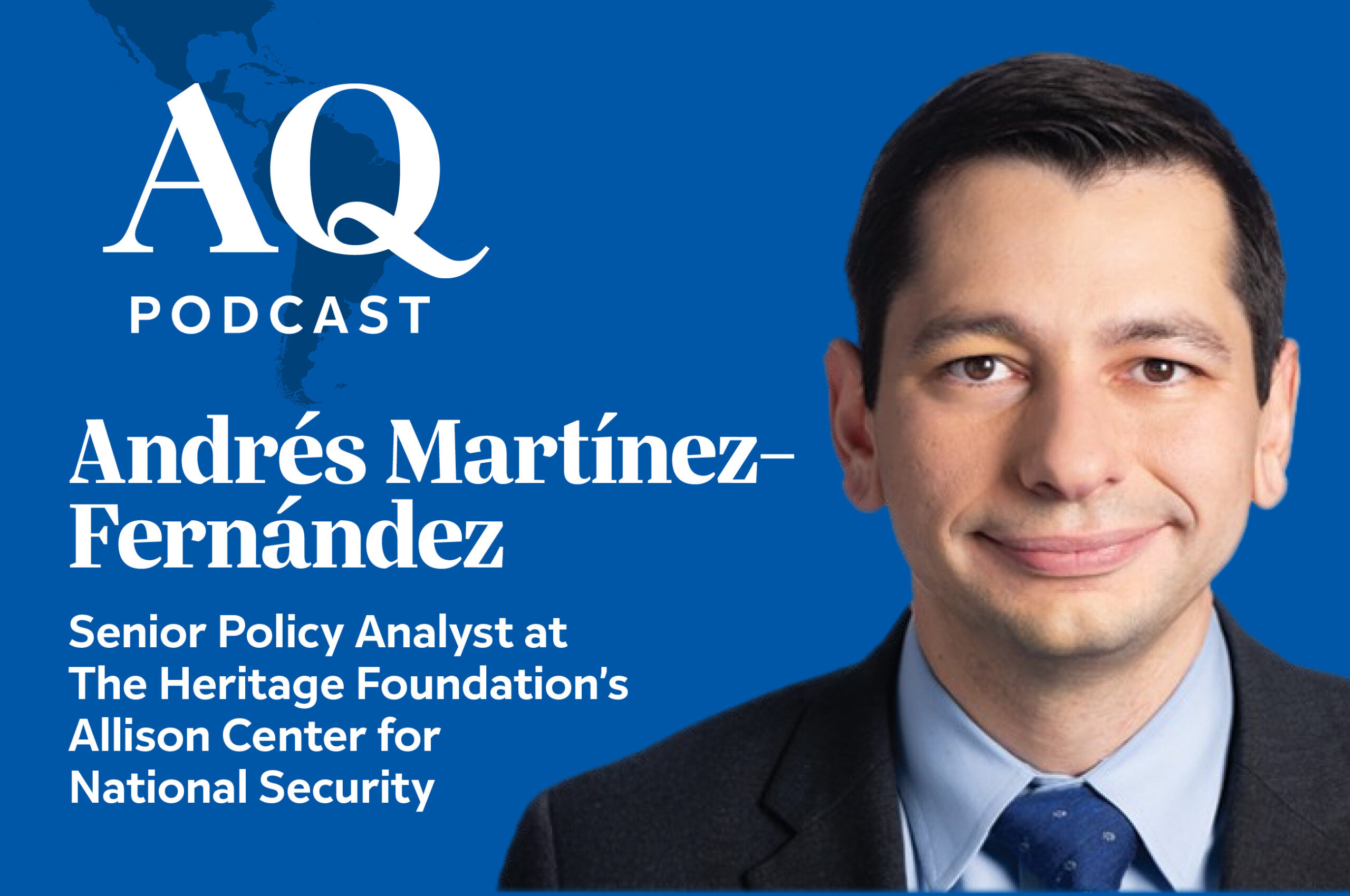Building the Hemispheric Growth Agenda: Trade and Integration in Latin America
Building the Hemispheric Growth Agenda: Trade and Integration in Latin America
Leading up to the Summit of the America, AS/COA Miami hosted a panel discussion on prospects for trade and integration in Latin America. At a time of financial crisis and a tendency toward protectionism, speakers agreed there is a need to consider a broader agenda for growth across the Western Hemisphere.
Speakers:
- Jane Bussey, Editorial Director, Latin Trade, Miami, FL
- Eric P. Farnsworth, Vice President, Washington Office, Council of the Americas, Washington, DC (moderator)
- Angela M. Hofmann, Senior Director, International Corporate Affairs, Wal-Mart Stores, Inc., Bentonville, AR
- Michael Warren, Executive Director of Global Research and Strategic Services, Hart Energy Consulting, Miami, FL
Summary
In advance of the Summit of the Americas in Trinidad and Tobago, the Americas Society and Council of the Americas hosted an April 2 public discussion in Miami on prospects for trade and integration in Latin America. The panel focused on the need for broader growth in the region. Speakers highlighted recommendations from the Council’s recent Trade Advisory Group (TAG) report, discussed the changing global context, and addressed bright spots for Latin America.
Broadening the Growth Agenda
Free trade has been central to growth policies in Latin America, particularly since the North American Free Trade Agreement was signed and heralded as a regional model. Now, with U.S. trade pacts with Colombia and Panama stalled, and given the current global tendency toward protectionism, speakers agreed there is a need to consider a broader agenda for growth across the Western hemisphere.
Trade remains an important factor in that agenda. Wal-Mart’s Angela Hoffmann described free trade as a mechanism that offers consumers a better balance price and value while allowing companies to adapt more sustainable supply chains across different regions. In this context, free trade over protectionism is a long-term solution versus a quick fix. Michael Warren of Hart Energy echoed this point and outlined how the U.S.-Colombian free trade agreement would open up that country’s automobile market, currently dominated by exports from Venezuela and Ecuador which enjoy preferential access through the Andean Trade Pact.
AS/COA’s recent TAG report highlights a broader growth agenda based on factors such as energy security and climate change, capacity building in developing sectors, and microeconomic reforms that make it easier to do business and shrink the informal economy. Speakers agreed that these are also important tools for fostering growth in the hemisphere.
FDI and Capacity Building
Investment in the region is by no means at a standstill. Warren pointed out that many companies are now finding consumers in emerging markets as U.S. purchasing power erodes, and this may bode well for economies in Latin America. Toyota, for example, has stopped investing in the U.S. market but is investing heavily in Colombia and Brazil. On the flipside, this spells good news for the U.S. economy; with a weakening currency, U.S. exports will be cheaper and free trade may be more appealing.
Farnsworth asked the panel to identify bright spots for investment in Latin America during the crisis, and speakers agreed Brazil and Mexico were strong markets that would carry the region. Warren underscored the political maturity in Brazil, which has seen a constant economic policy through three consecutive presidents. He pointed out the importance of institutions in fortifying growth. Hofmann added that Wal-Mart is indeed growing quickly in Brazil; the company has also been strong in Mexico, is growing in Argentina, has just entered the Chilean market, and is planning to enter Colombia’s in the near future.
Latin Trade’s Jane Bussey emphasized the importance of public/private partnerships—a frequent discussion point at the recent Inter-American Development Bank (IDB) meetings in Medellín. Warren, who believes that energy plays a key role in trade policy, pointed to some of Hart’s work with governments to establish energy policies for transportation that include petrol, ethanol, and biodiesel. Ethanol has had a tremendous impact in Brazil, he said, and building these capacities in other economies would be another way to promote growth and create jobs.
Asian-Latin American Relations
One concern addressed was that, despite the myriad of ways to promote the growth agenda in the region, absent trade agreements with the United States, Latin American nations are simply finding trading partners elsewhere. Canada, notably, has signed trade agreements with Colombia and Panama. China has joined the IDB and is a key player within the Asia-Pacific Economic Cooperation, which has become a major growth engine for the region. The country has also signed trade agreements with Peru, Chile, Costa Rica, and Cuba and is working with several other economies in the region, including Brazil.
Bussey added the caveat that many of these Chinese investment promises have yet to come to fruition. She noted that the Brazilian press questioned whether a $5 billion investment pledge there had been properly translated, as the investment has yet to arrive. Hofmann agreed that the Chinese have not yet been very active in business and investment in the region; their money is being spent on development efforts.
As the TAG report notes, Latin American countries continue to covet access to the U.S. market and their share of foreign direct investment but they have also sought to diversify their trading partners. Given that nations across the region are also seeking closer links with Asia and trans-Pacific trade is increasingly important for hemispheric trade expansion, Bussey suggested that the United States would do well to participate in a trans-Pacific trade agreement. This would show that the U.S. commitment to regional growth and, combined with other measures demonstrating interest in the region, would go a long way toward rebuilding U.S.-Latin American relations leading up to the Summit of the Americas and beyond.








